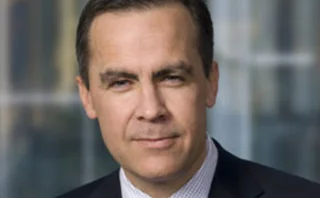
The credit derivatives divide
The US Fed, represented by chairman Alan Greenspan, was keen to promote the benefits of credit derivatives, talking them up in terms of improving financial stability through the wider dispersion of credit exposures.
Others, notably the UK’s representatives, were more sanguine about the implications of a market that could grow to $4,800 billion by the end of this year. In its Financial Risk Outlook 2004, published in January, UK regulator the FSA put forward its concerns – notably that the ease with which risk can now be transferred creates the possibility that some risks could become concentrated, and that there has been a net transfer of credit risk from the banking to the insurance sector.
The theme was picked up more broadly by the deputy governor of the Bank of England, Andrew Large, in a speech to the London School of Economics at the end of last month. In a wide-ranging discussion of risk management issues, Large said opinion on the role of derivatives was often polarised into two camps: the Greenspan party, which says banks’ ability to offload risk has allowed them to weather storms such as the Asian crisis and Enron; or the Buffett camp, which says the world has become more opaque and that it is more difficult to spot risk concentrations.
Large said both schools of thought were right. But while his comments were slightly tongue-in-cheek, his point is pertinent across the derivatives markets.
Take some of the articles in this month’s Risk as an example. Our cover story is about a formerly staid German bank, IKB Deutsche Industriebank, that has transformed itself through the use of credit derivatives to become a major investor in structured products that its bankers say has enormous sophistication and expertise. Of course, others may question whether such an institution should have such a taste for risk when seeking to improve its capital efficiency.
This month’s special report, Risk Products for Wealth Managers, highlights the growing breadth of investment opportunities for high-net-worth individuals in the structured product market. The use of derivatives and structures clearly offers private investors a chance to generate higher returns in a low interest rate environment. But as structures become more complex, so do concerns that investors may not fully understand what they are buying. Regulators are already taking a closer look.
In this month’s commodities rankings, the energy sector shows a notable shift towards major banks taking clients’ plaudits ahead of the traditional specialists. More players should offer more choice to end-users. But this widening participation – supported by the migration to screen-based trading and the increasing use of oil contracts to hedge political risk – is also raising concerns. The FSA will include commodity derivatives in the scope of an amended Investment Services Directive.
Only users who have a paid subscription or are part of a corporate subscription are able to print or copy content.
To access these options, along with all other subscription benefits, please contact info@risk.net or view our subscription options here: http://subscriptions.risk.net/subscribe
You are currently unable to print this content. Please contact info@risk.net to find out more.
You are currently unable to copy this content. Please contact info@risk.net to find out more.
Copyright Infopro Digital Limited. All rights reserved.
As outlined in our terms and conditions, https://www.infopro-digital.com/terms-and-conditions/subscriptions/ (point 2.4), printing is limited to a single copy.
If you would like to purchase additional rights please email info@risk.net
Copyright Infopro Digital Limited. All rights reserved.
You may share this content using our article tools. As outlined in our terms and conditions, https://www.infopro-digital.com/terms-and-conditions/subscriptions/ (clause 2.4), an Authorised User may only make one copy of the materials for their own personal use. You must also comply with the restrictions in clause 2.5.
If you would like to purchase additional rights please email info@risk.net
More on Central banks
Global investment outlook: 2026 and beyond
Broadening, steepening and weakening: Franklin Templeton’s top investment ideas for 2026 and beyond
Central bank watch: Biased to ease, for now
A mid-year review of the monetary policy outlook for G10 central banks, India, China and South Korea
Adopt FX code or face regulation, warn central bankers
Global code of conduct must be adopted, Schiavi and Debelle insist
Malaysia central bank: credit reporting could unite Asean markets
Asean Economic Community faces challenges, says deputy governor Muhammad bin Ibrahim
BoE's Carney: liquidity support for CCPs is a 'last-resort option'
BoE governor insists clearing houses must have enough liquidity to cope with default of two big member firms
BoE deputy governor Paul Tucker quits after 33 years
Deputy governor is bound for academia in the US after helping with transition to new Carney regime
Local regulators push for consistent standards across Asean region – Thai SEC interview
Underpinning the integration of regional capital markets is a major concern for Vorapol Socatiyanurak, secretary general of Thailand's Securities and Exchange Commission
New governor signs revised policy target agreement in New Zealand
The Reserve Bank of New Zealand’s policy targets agreement will come into effect on the same day Graeme Wheeler takes over as governor; document includes "stronger focus" on financial stability







